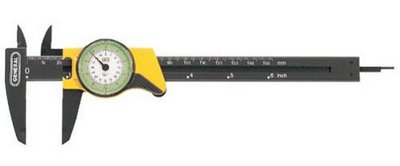How Much Paper Is Left?

That's the mundane question that plagues us. Sitting right next to my Epson 9600, I've got half a dozen rolls of paper in various widths and paper types. And the question is, how much paper is left on each roll? Knowing the answer can prevent nasty suprises at the end of a big print.
People who are good on record keeping probably keep track of what they print off each roll, and use this running count to calculate what's left. While I'm obsessive-compulsive in a lot of ways, this sort of record keeping isn't part of my psyche.
Instead, I use a pair of inexpensive General Tools dial calipers
You can download the excel workbook off my website here.
There are three sheets in the workbook. The first thing you want to do is calculate the thickness of the paper on the roll. If you have a number of prints with that paper, count them, stack them up, squish the stack tight, and measure the thickness of the stack and divide by the number of prints to give you the thickness of a single sheet. Record that under the 'known thicknesses' part of sheet number three, titled 'thickness from a full roll'.
If you happen to have a brand new, full roll of paper, you can calculate the thickness of the paper by measuring the core diameter, the starting diameter of the roll, and the length of the roll in feet. The thickness is calculated in mils. The value for Epson Enhanced Matte is in the spreadsheet when you download it.
Once you've calculated the thickness of the paper you care about, you're good to go.
To calculate how much paper is left on a roll, use the 'length from diameter' sheet, enter the relevant paper thickness and core diameter, then measure the diameter of the roll using the calipers, and enter the diameter in the 'diameter' spot. The length of the remaining paper on the roll appears in the 'paper length (feet)' cell.
Likewise, you can calculate the diameter of a roll with a given length of paper on it using the second sheet in the obvious way.
The dial on the calipers I happend to have laying around reads in inches, so the workbook is in inches. Conversion of the workbook to metric is left as a trivial exercise for reader who happen to have metric calipers.

0 Comments:
Post a Comment
<< Home